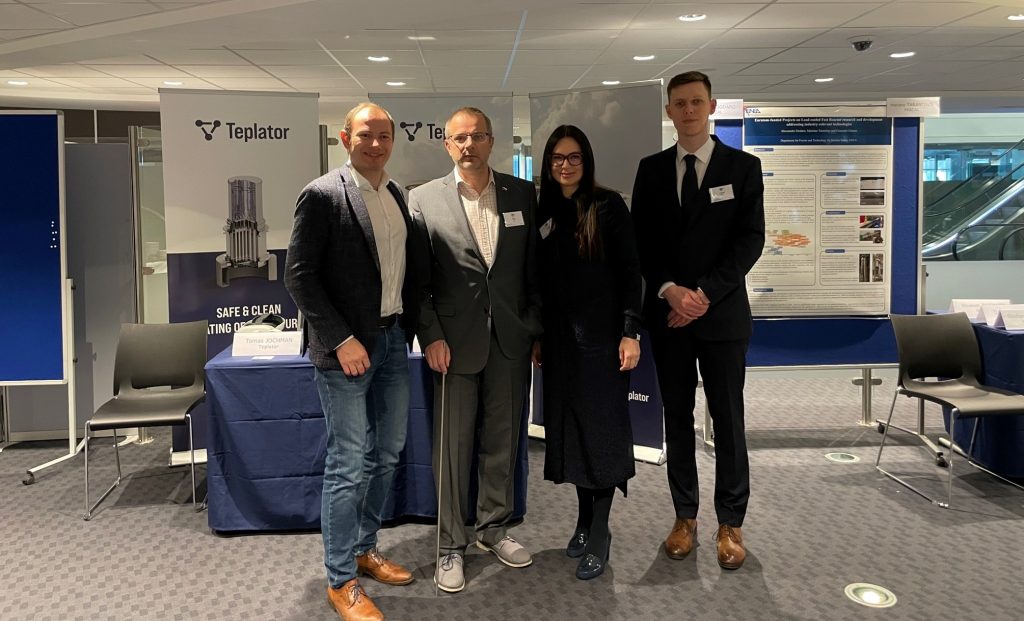4 April 2023, Brussels: On the occasion of the EC’s announcement of the ambitious Declaration on “EU Small Modular Reactors (SMRs) 2030”, the teams of CIIRC CTU with support of RICAIP presented their conceptual design of the so called “TEPLATOR”, which is a district heating solution based on low-pressure nuclear reactor using recycled irradiated fuel. The demonstrator was presented to Mariya Gabriel, Commissioner for Innovation, Research, Culture, Education and Youth.

TEPLATOR is a sustainable and efficient district heating solution that can provide carbon-free and low-cost heat, taking advantage of the district heating networks already in place in many cities. It is a simple, low-temperature, low-pressure nuclear reactor under 200 MW designed exclusively for heating purposes, which can either use low-enriched fresh nuclear fuel or already irradiated fuel cells from existing nuclear power plants. These used fuel assemblies can be recycled and reused in line with the circular and emission-free economy.

The presentation of TEPLATOR at the EuroSMR event was a unique opportunity for collaborative work of multiple CIIRC CTU teams: the innovation has been developed by the Prof. Radek Škoda and his Power Systems 4.0 department, whereas the presentation itself was prepared in cooperation with the CIIRC CTU Center of City of the Future (CCF), and the RICAIP Testbed for Industry 4.0 using the VR elements to showcase the TEPLATOR concept. Each department contributed with unique expertise and resources to the TEPLATOR demonstrator, from the technological solution, through the architectural study of the facility and its design, to the visualization of the overall solution in virtual reality. Hence, it is a comprehensive demonstration of the necessity of interdisciplinary approaches in addressing emerging challenges.



Small Modular Reactors
SMRs are smaller, both in terms of power output and physical size, than conventional gigawatt-scale nuclear reactors. In fact, SMRs are nuclear reactors with power output less than 300 megawatts electric (MWe), with some as small as 1-10 MWe. SMRs offer potential advantages in terms of design simplification and inherent safety features. SMRs are designed for modular manufacturing, factory production, portability, and scalable deployment. Reactors SMRs use nuclear fission reactions to create heat that can be used directly, or to generate electricity. SMRs can serve as complementing assets. SMRs are one promising option to replace old coal power plants and to complement the penetration of renewables. SMRs should offer the flexibility of use for district heating, desalination, process heat for energy-intensive industries and production of hydrogen.
More information about the Commission Declaration on ‘EU Small Modular Reactors (SMRs) 2030.
Photogallery: Participation of Mariya Gabriel, European Commissioner, to the launch of the “EuroSMR Initiative”.
